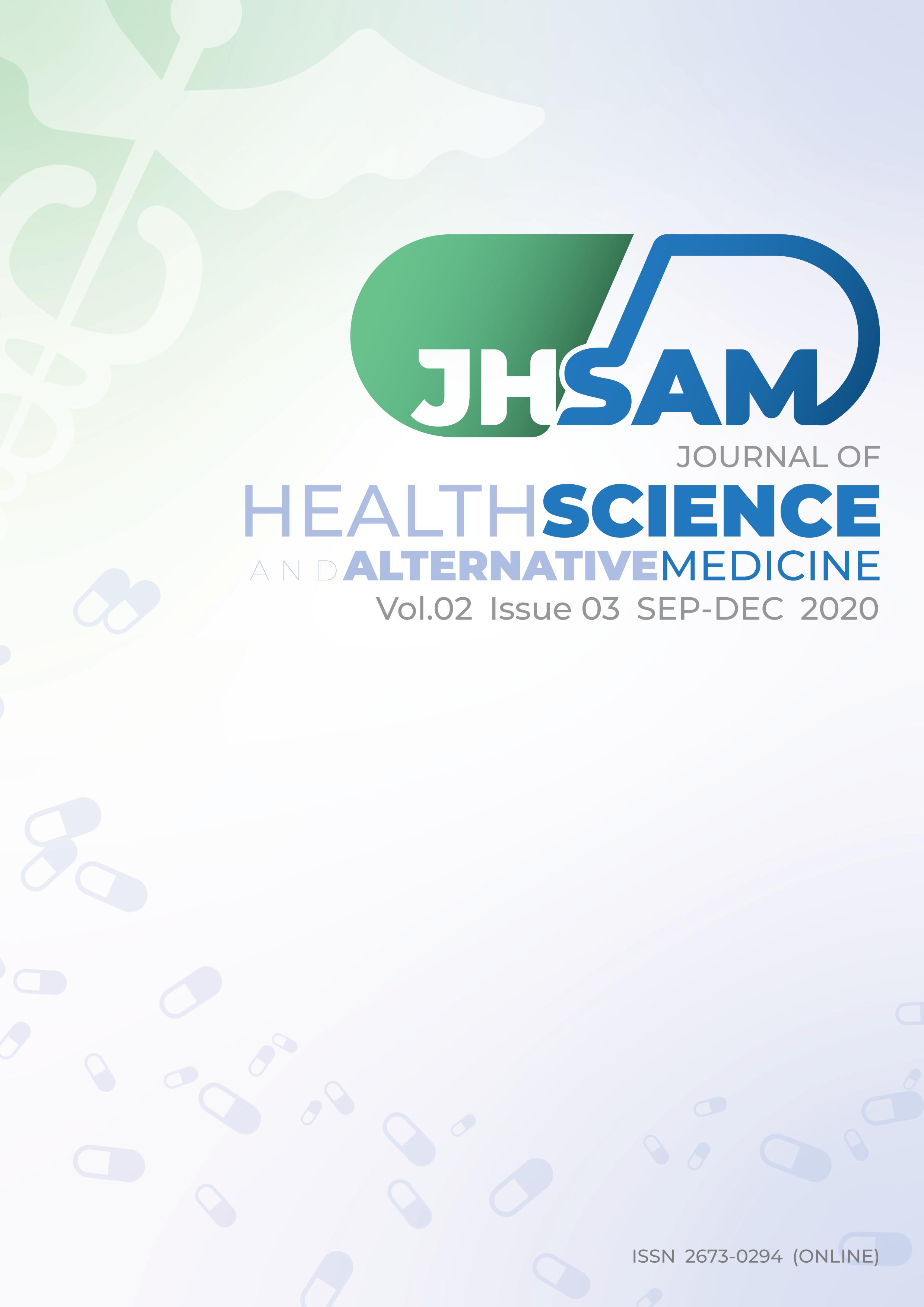Prevalence and Factors Associated with Depression among Public Health students, Mae Fah Luang University, Thailand
Main Article Content
Abstract
Introduction: Depressive symptoms is a sign of a mental health problem that causes a persistent feeling of sadness and a loss of interest in activities, and it can cause emotional, functional and physical problems and progress to severe depression. Objectives: This study aimed to estimate the prevalence of and identify the factors associated with depressive symptoms among students attending a life science program at a university located in Chiang Rai Province, Thailand. Methods: An analytic cross-sectional study was conducted from September to December 2019. A random method was used to select the participants. A validated questionnaire was used to collect socioeconomic information about the participants, and a health questionnaire (PHQ-9) was used to assess the participants’ depressive symptoms. Logistic regression was applied to determine the association between the variables at a significance level of a=0.05. Results: Of 270 students, 160 participants were recruited for the study; 87.5% were female, 43.8% reported that they did not have enough money to support their daily life, 10.0% had a family conflict, 30.6% had been subjected to bullying, and 15.6% reported that they did not consult anyone when facing a problem. The prevalence of depressive symptoms was 20.6%. After controlling for sex and age, two variables were found to be associated with depressive symptoms: family conflicts and having experienced being bullied by peers. Those who had a family conflict were more likely to have depressive symptoms than those who did not (AOR = 4.90, 95% CI = 1.46–16.38), and those who had been bullied were more likely to have depressive symptoms that those who had not (AOR = 3.24, 95% CI = 1.39–7.54). Conclusion: Improvements in family member relationships and minimizing bullying among peers at the university are urgently required interventions for preventing depressive symptoms among university students in Thailand.
Article Details
JHSAM publishes all articles in full open access, meaning unlimited use and reuse of articles with appropriate credit to the authors.
All our articles are published under a Creative Commons "CC-BY-NC-ND 4.0". License which permits use, distribution and reproduction in any medium,
provided that the original work is properly cited and is used for noncommercial purposes.
References
[1] GBD 2017 Disease and Injury Incidence and Prevalence Collaborators. Global, regional, and national incidence, prevalence, and years lived with disability for 354 diseases and injuries for 195 countries and territories, 1990–2017: a systematic analysis for the Global Burden of Disease Study 2017. (2018). The Lancet. DOI: https://doi.org/10.1016/S0140-6736(18)32279-7.
[2] World Health Organization. Depression. 2020. Retrieved June 28, 2020 from https://www.who.int/news-room/fact-sheets/detail/depression.
[3] World Health Organization. Depression and other common mental disorders: global health estimates (No. WHO/MSD/MER/2017.2). 2017. World Health Organization.
[4] Department of Mental Health. Thailand suicidal prevalence report 2019. Retrieved June 28, 2020 from https://www.dmh.go.th/report/suicide/viewg1.asp?id=28.
[5] Wongsuraprakit, S.,& Santiprasitkul, S. Situation of Depression in Pre-Screened Risk Groups in Muang District, Chiang Rai Province. Thai Journal of Nursing Council. 2012; 27(3):91-105. https://he02.tci-thaijo.org/index.php/TJONC/article/view/547
[6] Ruanjai T, Krittiyapichartkul N, Wongnuch P, Kawdounglek V. Prevalence and Factors Associated with Depression among Public Health Students, Mae Fah Luang University. Lampang Med J. 2016 Jun 30;37(1):9-15.
[7] Department of Mental Health. PHQ-2, PHQ-9 and PHQ-8.
https://www.dmh.go.th/test/download/files/2Q%209Q%208Q%20(1).pdf
[8] Lotrakul M, Sumrithe S, Saipanish R. Reliability and validity of the Thai version of the PHQ-9. BMC Psychiatry. 2008;8:46.
[9] Lin HC, Tang TC, Yen JY, Ko CH, Huang CF, Liu SC. Depression and its association with self-esteem, family, peer and school factors in a population of 9586 adolescents in southern Taiwan. Psychiatry Clin Neurosci.2008; 62: 412–420.
[10] Thongbang P. Predictive factors that influence depression among Sirindhorn college of public health Suphanburi .Journal of Yanasangvorn Research Institute Mahamakut Buddhist University, 2019, 10.1: 27-36.
[11] Cummings EM, Schatz JN. Family Conflict, Emotional Security, and Child Development: Translating Research Findings into a Prevention Program for Community Families. Clinical Child and Family Psychology Review. 2012; 15: 14–27.
[12] Emery RE. Interparental conflict and the children of discord and divorce. Psychol Bull.1982; 92: 310–330.
[13] Chapell MS, Hasselman SL, Kitchin T, Lomon SN, MacIver KW, Sarullo PL. Bullying in elementary school, high school, and college. Adolescence. 2006 Dec 22;41(164):633-49.
[14] Chen YY, Huang JH. Precollege and in-college bullying experiences and health-related quality of life among college students. Pediatrics. 2015 Jan 1;135(1):18-25.
[15] Jantzer A, Hoover J, & Narloch R. The relationship between school-aged bullying, and trust, shyness, and quality of friendships in young adulthood. School Psychology International. 2006. 27, 146-156.
[16] Schäfer M, Korn S, Smith PK, Hunter SC, Mora‐Merchán JA, Singer MM, Van der Meulen K. Lonely in the crowd: Recollections of bullying. British Journal of Developmental Psychology. 2004 Sep;22(3):379-94.

